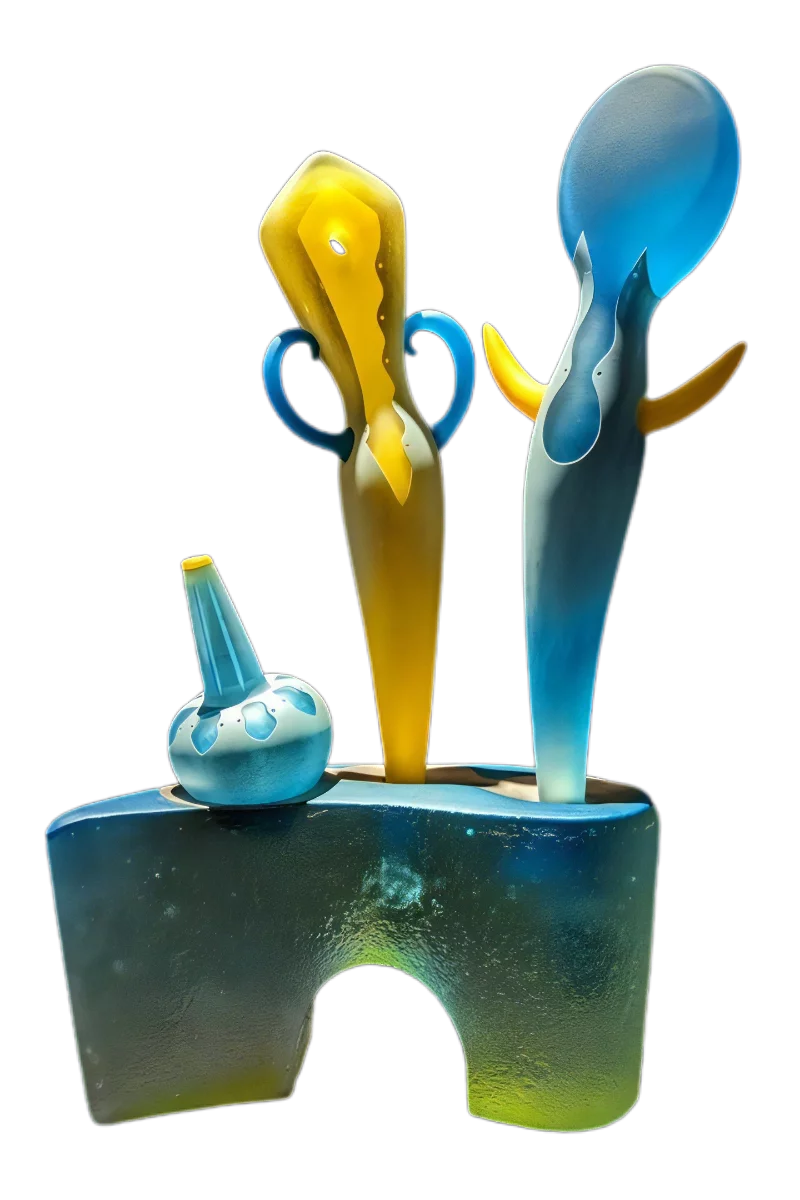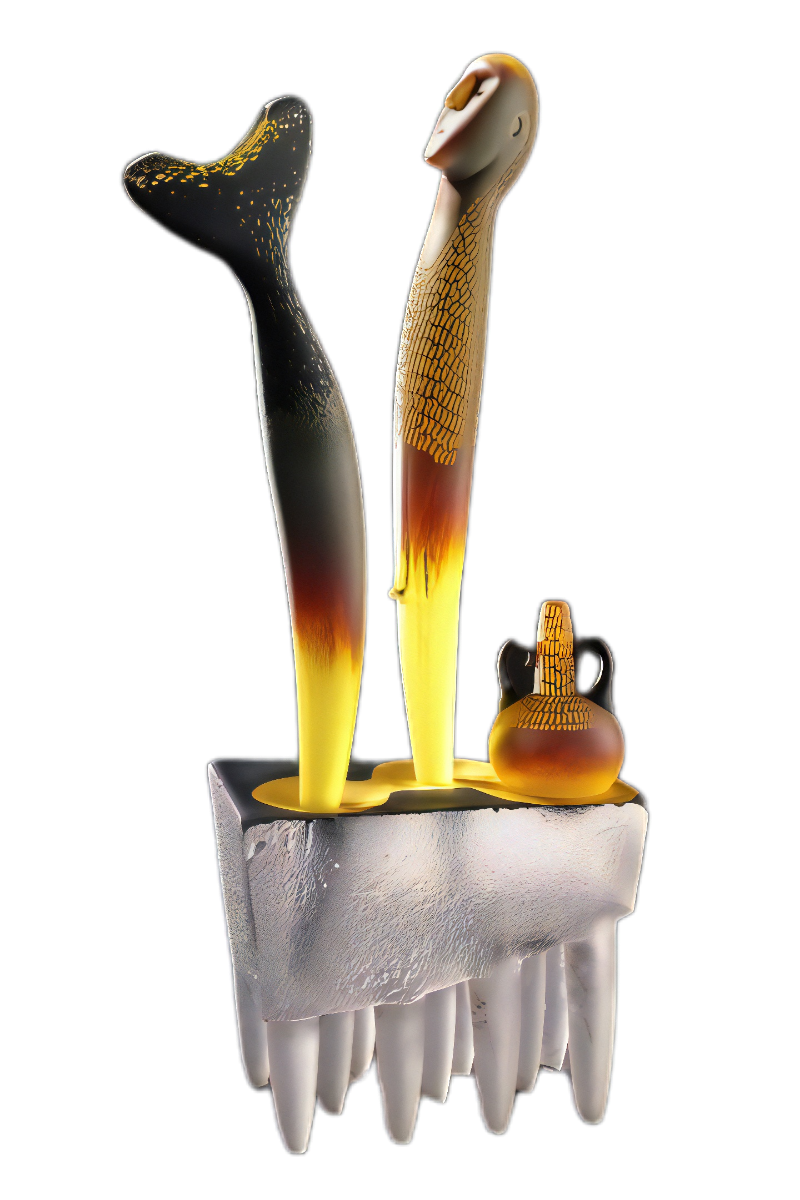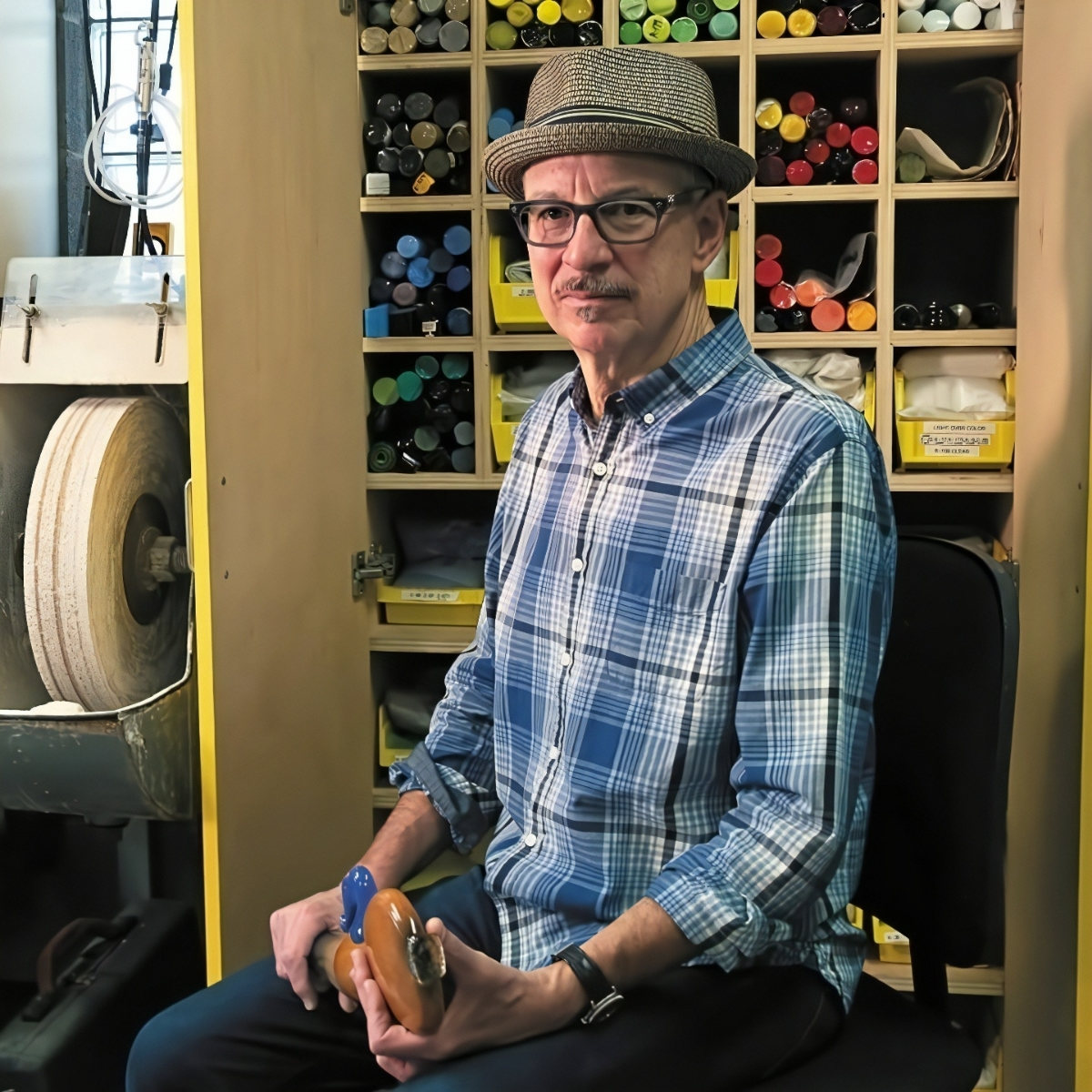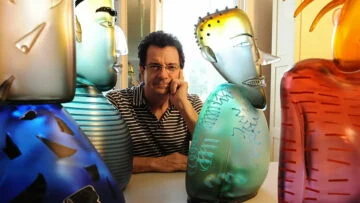For art enthusiasts and collectors, José Chardiet’s work offers a unique opportunity to own a piece of contemporary glass art that is both visually captivating and rich in meaning. As he continues to explore new themes and techniques, the art world eagerly anticipates what this master of glass will create next.
José Chardiet is a renowned glass artist whose innovative techniques and unique vision have earned him international acclaim. Born in Havana, Cuba in 1956, Chardiet’s journey in the world of glass art began when his family emigrated to the United States when he was just four years old. Settling in New Haven, Connecticut, Chardiet’s passion for glass as an artistic medium was ignited during his time at Southern Connecticut State University, where he earned his B.A. in 1980. His dedication to the craft led him to pursue further studies at Kent State University, culminating in an M.F.A. in 1983.
Throughout his career, Chardiet has established himself as a master of glassblowing, casting, and innovative design techniques. His work is characterized by bold forms, vivid colors, and a deep exploration of the interplay between light, transparency, and form. This article delves into the life, career, and unique design procedures of José Chardiet, offering insights into the mind of this exceptional glass artist.
Early Career and Influences
After completing his M.F.A., Chardiet quickly made a name for himself in the glass art community. He served as an Artist in Residence at Kent State University in 1985, marking the beginning of a career that would see him become not only a celebrated artist but also an influential educator. Chardiet has taught at some of the most prestigious craft schools in the United States, including Pilchuck Glass School, Penland School of Crafts, and the Haystack School of Crafts.
From 1991 to 2000, Chardiet held the position of Professor of Glass and Sculpture at the University of Illinois Urbana-Champaign. This tenure allowed him to refine his teaching methods and inspire a new generation of glass artists. However, in 2000, Chardiet made the bold decision to leave his teaching position to pursue a full-time career as an artist, a move that would lead to some of his most innovative and celebrated works.
Chardiet’s artistic vision is informed by a diverse range of influences. He draws inspiration from various sources, including:
- Spanish still-life painting
- African art
- Woodwind instruments
- Nature and organic forms
- Contemporary painters and sculptors
- Color palettes from unexpected sources, such as fashion catalogs
One pivotal moment in Chardiet’s artistic development came when he attended an exhibition in Detroit showcasing the influence of African art on 20th-century painters like Picasso. This experience had a profound impact on his work, particularly in the development of his still-life series, which he began nearly two decades ago.
Design Procedures and Techniques
José Chardiet’s approach to glass art is characterized by a meticulous and thoughtful process that combines traditional glassblowing techniques with innovative methods. His design procedures typically involve several stages:
1. Conceptualization and Sketching
Every piece begins with Chardiet’s vision. He starts by creating detailed sketches of different elements, exploring forms, and considering color combinations. This planning stage is crucial in glasswork, as the medium requires careful forethought before the actual creation process begins.
2. Hot Work: Glassblowing and Manipulation
Chardiet is a master of hot work, which involves manipulating glass at extremely high temperatures. His process includes:
- Gathering molten glass from a furnace at temperatures around 2,300 degrees Fahrenheit
- Blowing and shaping the glass using traditional tools and techniques
- Hot sculpting, where he manipulates the glass without necessarily creating a bubble
3. Casting Techniques
In addition to blown glass, Chardiet incorporates casting techniques in his work. This may involve:
- Creating molds for specific shapes
- Pouring molten glass into these molds to create solid or hollow forms
- Combining cast elements with blown glass pieces
4. Cold Work
Once the hot work is complete, Chardiet refines his pieces through cold work techniques, which may include:
- Cutting and polishing the glass to achieve desired shapes and surface textures
- Carving details into the cooled glass
- Grinding and smoothing surfaces
5. Electroplating
A unique aspect of Chardiet’s work is his use of electroplating. This technique involves:
- Applying a metallic coating to parts of the glass sculpture
- Creating contrast between transparent and opaque areas
- Adding depth and visual interest to the piece
6. Assembly and Finishing
For more complex sculptures, Chardiet may create individual components separately and then assemble them into the final piece. This stage involves:
- Carefully joining different glass elements
- Ensuring structural integrity of the sculpture
- Adding final touches and adjustments
Throughout this process, Chardiet remains flexible and responsive to the inherent properties of glass. As he notes, “Glass has a mind of its own,” and part of his artistry lies in his ability to work with the material’s unique characteristics.
Signature Series and Themes
Over the years, Chardiet has developed several distinct series of works, each exploring different themes and forms. Some of his most notable series include:
Still Life Series Inspired by African art and traditional still-life painting, this series features sculptural groups that often evoke human families, undersea creatures, and exotic plants. These pieces are known for their dynamic energy and the way they seem to act out dramas of love, sex, and conflict.
Architectural Structures This series explores geometric forms and architectural elements, translating rigid structures into fluid glass creations.
Vessel Series Chardiet’s vessels are not merely functional objects but sculptural forms that challenge the traditional concept of a container. These pieces often play with the relationship between interior and exterior spaces.
Teapot Series Perhaps one of his most whimsical series, Chardiet’s teapots combine elaborate, old-world style with a touch of contemporary humor. These pieces showcase his ability to transform everyday objects into extraordinary art forms.
Prism and Vitrine Series These works focus on the interplay of light and color, often featuring complex internal structures visible through transparent outer layers.
Color and Light in Chardiet’s Work
One of the most striking aspects of José Chardiet’s glass sculptures is his masterful use of color. His palette is vibrant and diverse, drawing inspiration from a wide range of sources. Chardiet has mentioned finding color inspiration in unexpected places, from the wings of butterflies in his yard to the pages of fashion catalogs.
The artist’s approach to color is not just about aesthetic appeal; it’s an integral part of the sculpture’s narrative and emotional impact. By layering different colors of glass and manipulating transparency and opacity, Chardiet creates depth and complexity in his pieces that invite prolonged contemplation.
Light plays a crucial role in bringing Chardiet’s sculptures to life. His understanding of how light interacts with glass allows him to create pieces that change depending on the viewing angle and lighting conditions. This dynamic quality adds an element of surprise and discovery for the viewer, as different aspects of the sculpture reveal themselves over time.
The Importance of Interior Space
A unique aspect of Chardiet’s philosophy is his focus on the interior spaces of his sculptures. As he explains, “One constant in all my sculpture is a greater concern for the interior or void of the piece rather than the walls that define it. Really for me the interior or void is where all the spiritual power lies, not the surface.”
This emphasis on interior space is evident across his various series, whether they reference architecture or the human form. Chardiet often uses polishing techniques and manipulates the glass’s translucency to expose and highlight these interior spaces, inviting viewers to look beyond the surface and explore the “soul” of the sculpture.
Recognition and Collections
José Chardiet’s innovative approach to glass art has earned him numerous accolades and placements in prestigious collections around the world. His work can be found in over 20 museums, including:
- The Renwick Gallery of the Smithsonian American Art Museum, Washington, D.C.
- The Museum of Arts and Design, New York
- The Corning Museum of Glass, Corning, New York
- The Yokohama Museum of Art, Japan
- The Musée des Arts Décoratifs, Lausanne, Switzerland
- The High Museum of Art, Atlanta, Georgia
- The Detroit Institute of Art, Michigan
- The Mint Museum of Art, Charlotte, North Carolina
Chardiet has also received fellowships from esteemed institutions such as the Institute of International Education, the Ohio Arts Council, and the Creative Glass Center of America. These recognitions not only celebrate his artistic achievements but also highlight his significant contributions to the field of contemporary glass art.
Teaching and Legacy
While Chardiet left his full-time teaching position in 2000 to focus on his studio work, his impact as an educator continues to resonate in the glass art community. His tenure as a professor and his workshops at renowned craft schools have influenced countless aspiring glass artists.
Chardiet’s approach to teaching mirrors his artistic philosophy – encouraging students to push the boundaries of the medium while maintaining a deep respect for traditional techniques. His emphasis on conceptual development alongside technical skill has helped shape a new generation of glass artists who approach the medium with both creativity and rigor.
Current Work and Future Directions
Today, José Chardiet continues to create stunning glass sculptures from his studio. His recent work shows an ongoing evolution of his artistic vision, with pieces that push the boundaries of form, color, and technique even further.
Chardiet’s current focus remains on creating sculptures that are imbued with spiritual and inner life. He continues to explore the interplay between different glass forms, often suggesting family connections and relationships within his sculptural groups.
As he moves forward, Chardiet remains open to new inspirations and techniques. While glass remains his primary medium, he has expressed interest in potentially working with other materials in the future, showcasing his adaptability and continuous desire for artistic growth.
Conclusion
José Chardiet’s journey from a young Cuban immigrant to a celebrated glass artist is a testament to his talent, dedication, and innovative spirit. His unique approach to glassmaking, which combines traditional techniques with contemporary vision, has resulted in a body of work that is both visually stunning and conceptually rich.
Chardiet’s emphasis on interior spaces, his masterful use of color and light, and his ability to imbue glass with spiritual qualities set him apart in the world of contemporary art. His sculptures invite viewers to look beyond the surface, encouraging a deeper engagement with the artwork.
As José Chardiet continues to create and evolve as an artist, his work serves as an inspiration to both established and emerging artists in the field. His legacy is not just in the beautiful objects he creates, but in the way he has pushed the boundaries of what is possible with glass as an artistic medium.
For art enthusiasts and collectors, José Chardiet’s work offers a unique opportunity to own a piece of contemporary glass art that is both visually captivating and rich in meaning. As he continues to explore new themes and techniques, the art world eagerly anticipates what this master of glass will create next.





